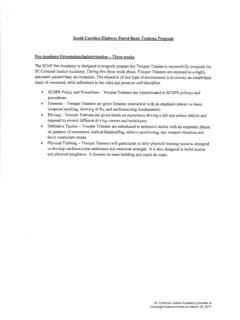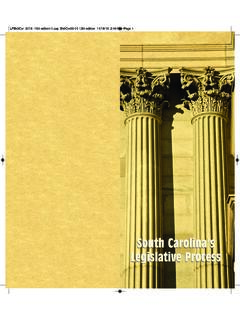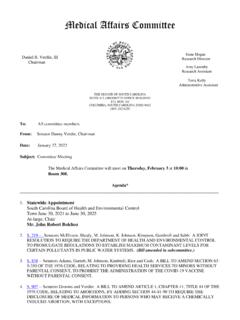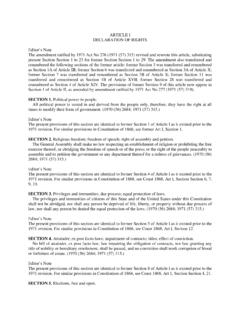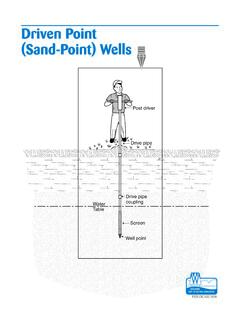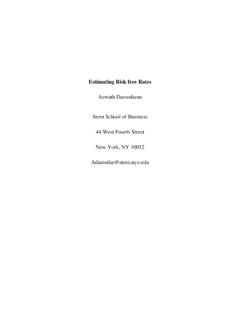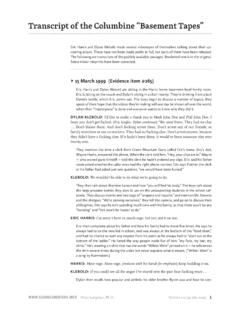Transcription of protocol Dr. George Fareed and Dr. Brian Tyson share early ...
1 George Fareed and Dr. Brian Tyson share early treatmentprotocolDec 12, 2020Dr. George Fareed , Imperial Valley frontline doctor fighting against the COVID-19 pandemic locally,has been fielding phone calls from across the nation helping those afflicted but unable to get earlytreatment from their medical establishments. I m really busy, but I m willing to help anyone, Fareed doctor reached out to The Desert Review suggesting publication of the protocol he and Tyson have refined for their local patients that has been so successful. Fareed also included inhis material what Dr. Zelenko, a pioneer in repurposing medicines for the virus has developed as aprophylaxis, a preventative included in the material submitted, is a follow up to Dr.
2 Fareed s Senate hearing, EarlyOutpatient Treatment: An Essential Part of a COVID-19 Solution held November 19 in the Josh Hawley submitted questions to Dr. Fareed to clarify his testimony for the record. Hereis the correspondence between the Senator and Fareed on December 10:Sen. Hawley: In your testimony, you say that timing is everything when it comes to treatment andthat the best time for outpatient treatment to prevent hospitalization comes when the virus is in aperiod of maximum replication in the upper respiratory tract. Can you explain what this would meanfor a patient? Would this be five days after exposure, or ten days? Or is it based on symptoms? Dr. Fareed : The earlier the treatment can be started after the start of the infection, the better andmore rapid the recovery (as well as the reduction in the risk of spread/contagious period).
3 Thiswould mean that the patient should optimally start the treatment in the first 4 days of the infectionand within five days of exposure. It usually is based on symptoms which start within 1-4 days of viralentry into the upper respiratory system. Even starting the multi-faceted treatment later (7-10 daysafter infection) is also very worthwhile if severe pneumonia necessitating hospitalization has not yetset Hawley: In your experience, are patients typically coming in to get treated at this point in theirillness? And if not, what do you think we need to do to encourage high-risk individuals to seekoutpatient treatment and care? Dr. Fareed : More patients are coming in to get treated or contacting me from afar for treatmentwhen they can t receive the treatment in their local communities.
4 Sadly, many infected people andprimary care doctors and doctors in ERs follow the NIH and Dr. Fauci stipulations with no effectivetreatments offered. We need to have the NIH/FDA/CDC formally acknowledge the importance ofearly treatment with moderately acting, safe anti-virals so readily available. When (if ever) thathappens, everything would improve dramatically. Thank you, Senator Hawley, for all your effortsand for allowing me to respond to these excellent following is the protocol Drs. Fareed and Tyson have jointly developed as most effective fortheir COVID-19 patients: Fareed / Tyson COVID-19 Treatment ProtocolHCQ 200 mg tabs #16 (HCQ = hydroxychloroquine)Zinc sulfate 22O mg (or elemental Zinc 50 mg) # 15 Azithromycin 500 mg # 5 (or Z pack) orDoxycycline 100 mg # 10)Ivermectin 3 mg tabs #8 Aspirin 325 mg tabs #30 Day 1 - HCQ 2 tabs twice a day Zinc sulfate tab twice a day(Azithromycin tab one per day or doxycycline cap twice a day)Ivermectin 12 mg on day 1 onlyAspirin 325 mg Days 2-5 HCQ tab 3 times a dayZinc sulfate 3 times a day(Azithromycin tab daily or doxycycline cap twice a day)
5 Aspirin 325 mg dailyIvermectin 12 mg on day 3 if symptoms warrant Prednisone 60 mg daily x 5-7 days orDexamethasone 4 mg bid if wheezing /SOBB udesonide v a nebulizer bid Vitamin D3 5000 iu dailyPepcid 20 mg dailyContinue daily Aspirin 325 mgOver the counter prevention:Elemental Zinc 25 mg once a dayVitamin D 4000 iu once a dayVitamin C 1000 mg once a day Quercetin 500 mg once a day If Quercetin is unavailable, then use Epigallocatechin-gallate (EGCG) 400mg once a dayDr. Fareed also included Dr. Zelenko s (Twitter: @zev_dr) COVID-19 Prophylaxis protocol : Prophylaxis is an action taken to prevent or protect against a specified disease. Greek in origin, fromthe word "phylax", meaning "to guard" and "watching.
6 " Low Risk PatientsYoung healthy people do not need prophylaxis against COVID-19. In young and healthy people, thisinfection causes mild cold-like symptoms. It is advantageous for these patients to be exposed toCOVID-19, build up their antibodies and have their immune system clear the virus. This will facilitatethe development of herd immunity and help prevent future COVID-19 pandemics. However, if thesepatients desire prophylaxis against COVID-19, then they should take the protocol noted below. Moderate-Risk PatientsPatients from this category are healthy but have high potential viral-load exposure. This groupincludes medical personnel, caregivers of high-risk patients, people who use public transportation,first responders and other essential personnel who are crucial to the continued functioning ofsociety.
7 These patients should be encouraged to take prophylaxis against COVID-19 in accordancewith the protocol noted PatientsPatients are considered high risk if they are over the age of 60, or if they are younger than 60 butthey have comorbidities, that is, they have other health conditions that put them at risk. Thesepatients have between a 5 to 10 percent mortality rate if they are infected with COVID-19. Thesepatients should be strongly encouraged to take prophylaxis against COVID-19 in accordance withthe protocol noted below. protocol for Low and Moderate Risk Patients:Elemental Zinc 25 mg once a day[1]Vitamin C 1000 mg once a day[2]Quercetin 500 mg once a day If Quercetin is unavailable, then use Epigallocatechin-gallate (EGCG) 400 mg once a day[3] protocol for High-Risk Patients:Elemental Zinc 25 mg once a day Hydroxychloroquine (HCQ[4]) 200 mg once a day for five days, then once a weekIf HCQ is unavailable, then use the protocol for Low and Moderate Risk Patients.
8 [1] [2] [3] [4]
